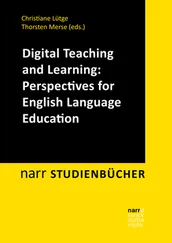1 ...8 9 10 12 13 14 ...23 To stick to the example of the plural – s , examples from the learners’ reports can be written on the right-hand side of the board (for instance, when the task consisted of preparing a healthy fruit salad for the class and writing a shopping list for this, the expressions on the board could be “5 apple s ” or “4 banana s ”). Following this, the teacher writes the number 1 on the left-hand side of the board and asks for each fruit “and if I have only one of these, what do I say?” and the answers are then written on the board by those learners who gave them. When all slots are filled (three or four expressions should be enough in this case), the teacher asks the learners which differences they notice between the expressions on the left-hand side of the board and those on the right-hand side of the board. They will notice the extra morpheme, the ‘s’, which will then be underlined. However, this is only the explanation of the form, but the explanation of the meaning is equally important, namely that the plural morpheme means ‘more than one’. The learners can be asked to offer their own hypotheses on the meaning of the plural form, by answering the teacher’s questions about why they think the ‘s’ is added, and they will easily find an answer along the lines of ‘more form is more meaning’, a clear instance of iconicity in language. Other grammatical phenomena are of course not as easy to explain as the plural – s , these will be discussed in the second half of this book.
Furthermore, if enough time is available after the language focus, a post-task activity can be added in order to solidify the grammatical information provided during the language focus. In this case, a transfer to another word field, for example, siblings or animals (“who has a brother/sister?” – “how many brother s / sister s do you have?” or similar), is recommended. Should there not be enough time left during the lesson itself, the transfer can be done for homework.
Summing up, it should be kept in mind that the different phases of the task cycle focus on different aspects of the two learning targets, i.e., the communicative one and the grammatical one. Whereas the pre-task phase sets the stage for the communicative topic (such as talking about healthy eating habits) and already makes the learners subconsciously and passively familiar with the grammatical phenomenon (by the teacher’s use of pluralized nouns), the task itself stays within the communicative domain but demands the learners’ active use of the grammatical construction (such as the compilation of shopping lists and the potential election of the best fruit salad, judged by its ingredients) and the language focus acquaints the learners in a structured and inductive way with the form as well as with the meaning of the grammatical construction they already used during the task, ideally followed by a transfer to another word field or topic.
This procedure is in line with ROBINSON’s (2011: 14) idea that “pedagogic tasks should be sequenced solely on the basis of increases in their cognitive complexity”. In other words, in the suggested slightly modified2 task cycle the learners receive input that already contains the structure in question during the pre-task phase but normally do not yet use the targeted structure themselves, while during the task phase they should use the structure actively without reflecting on it and during the language focus and the post-task phase, i.e., the transfer, they are expected to pay explicit attention to the structure and its use. ROBINSON further recommends to
… increase resource-dispersing dimensions of task complexity first (to promote access to current interlanguage), then increase resource-directing dimensions of complexity (to promote development of new form-function mappings, and destabilize the current interlanguage system). (ROBINSON 2011: 15)
An access to the learners’ current interlanguage systems is provided by the communicative focus of the pre-task, during which the learners are involved in establishing the communicative lesson topic on the basis of their language and world knowledge. Only afterwards are they exposed step-by-step to the grammatical topic of the lesson in an inductive way. In an ideal case, this changes their interlanguage systems, into which they will start to integrate the newly acquired structure.
2.3 The role of grammar in task-based language teaching
It will probably already have become obvious that not all proponents of task-based teaching agree on the role that grammar should play in this approach. Especially researchers with a background in communicative language teaching rather suggest to carry on teaching in the communicative way, i.e., to assume that grammar develops on its own during communicative activities and to therefore neglect an introduction to grammatical phenomena of the target language. As a consequence of this neglect of grammar, learners may develop strategies to complete the task quickly, cutting corners in their language use and form. NUNAN (1998: 97), for example, defines task-based teaching as “an approach to the design of a language course in which the point of departure is not an ordered list of linguistic items, but a collection of tasks”. On the one hand, he seems to contrast task-based teaching with approaches such as the PPP method, where normally the language form serves as the starting point, but on the other hand, he also seems to implicitly promote the view that grammar should not play any major role in task-based teaching.
Other task-based scholars, such as WILLIS, admit that there has to be a certain place for grammar in a task-based lesson, but nevertheless state that communicative meaning needs to be the primary focus of the lesson. Furthermore, the way in which Willis describes her task cycle (cf. the previous sub-chapter) – and especially the language focus at its end – can lead to the assumption that also in her approach grammar is rather seen as a “necessary evil” and although it is tolerated, it is not seen as a key issue. Researchers such as R. ELLIS or ROBINSON allocate a somewhat more important place to grammar but do not see it as playing a key role in a task-based lesson either, and also SAMUDA/BYGATE (2008: 208) state that “contrary to many common assumptions about TBLT – drawing attention to form is neither proscribed nor outlawed”, mainly addressing those researchers who try to avoid grammar topics in task-based lessons.
More importance is given to grammar by ECKERTH, who recommends so-called ‘consciousness-raising tasks’, which he describes as form-focused (hence their name ‘focused tasks’) and which can be used to “direct learners’ attention to specific L2 forms while they are communicating in the L2” (2008a: 92). In contrast to other task types, which rather focus on implicit learning, consciousness-raising tasks are directed at explicit learning. Learners are given the possibility to explore target features in a focused context while completing a task according to the guidelines given by the teacher. The grammar topic builds the focus of the lesson.
R. ELLIS (2003), on the other hand, rather suggests to use unfocused tasks and to only occasionally integrate a focused (or consciousness-raising) task because he believes that it is not possible for a syllabus to consist of only consciousness-raising tasks1. For R. ELLIS, the primary concern of a focused task should still the message content and not the form, as the learners’ attention to form is incidental (cf. 2003: 141). Similar to what this book suggests, he mentions that the learners should not be informed that a specific language form is targeted nor which form this might be. The grammatical construction in question can be targeted either in a productive (i.e., the learners produce the form in question) or in a receptive way (i.e., the learners pay attention to the form in the instructor’s input). According to R. ELLIS, it is “considerably easier to design tasks that focus incidental attention of form receptively than tasks that elicit incidental production of a targeted feature” (2003: 142). The grammar examples in the second part of the book all aim at production, as this is what the learners need to be exposed to do in order to advance their interlanguage. Just noticing a grammatical feature is not enough, it also has to be used in communication in a grammatically, pragmatically and socioculturally adequate way.
Читать дальше












